Chrysler 2011 Annual Report Download - page 61
Download and view the complete annual report
Please find page 61 of the 2011 Chrysler annual report below. You can navigate through the pages in the report by either clicking on the pages listed below, or by using the keyword search tool below to find specific information within the annual report.-
 1
1 -
 2
2 -
 3
3 -
 4
4 -
 5
5 -
 6
6 -
 7
7 -
 8
8 -
 9
9 -
 10
10 -
 11
11 -
 12
12 -
 13
13 -
 14
14 -
 15
15 -
 16
16 -
 17
17 -
 18
18 -
 19
19 -
 20
20 -
 21
21 -
 22
22 -
 23
23 -
 24
24 -
 25
25 -
 26
26 -
 27
27 -
 28
28 -
 29
29 -
 30
30 -
 31
31 -
 32
32 -
 33
33 -
 34
34 -
 35
35 -
 36
36 -
 37
37 -
 38
38 -
 39
39 -
 40
40 -
 41
41 -
 42
42 -
 43
43 -
 44
44 -
 45
45 -
 46
46 -
 47
47 -
 48
48 -
 49
49 -
 50
50 -
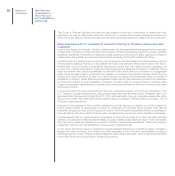 51
51 -
 52
52 -
 53
53 -
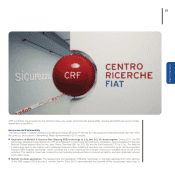 54
54 -
 55
55 -
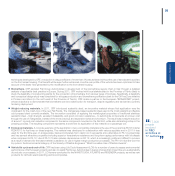 56
56 -
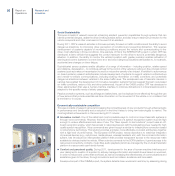 57
57 -
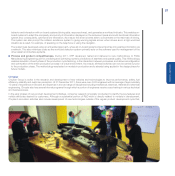 58
58 -
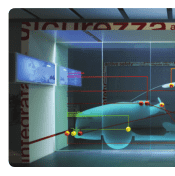 59
59 -
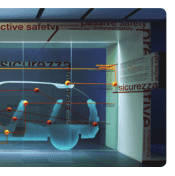 60
60 -
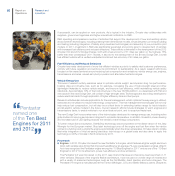 61
61 -
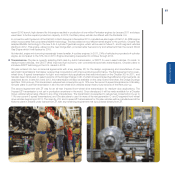 62
62 -
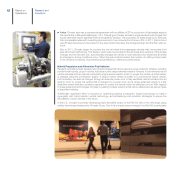 63
63 -
 64
64 -
 65
65 -
 66
66 -
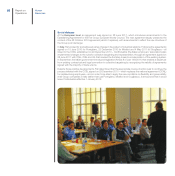 67
67 -
 68
68 -
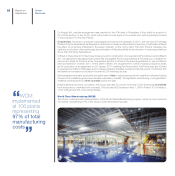 69
69 -
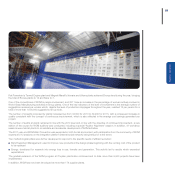 70
70 -
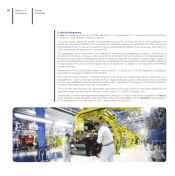 71
71 -
 72
72 -
 73
73 -
 74
74 -
 75
75 -
 76
76 -
 77
77 -
 78
78 -
 79
79 -
 80
80 -
 81
81 -
 82
82 -
 83
83 -
 84
84 -
 85
85 -
 86
86 -
 87
87 -
 88
88 -
 89
89 -
 90
90 -
 91
91 -
 92
92 -
 93
93 -
 94
94 -
 95
95 -
 96
96 -
 97
97 -
 98
98 -
 99
99 -
 100
100 -
 101
101 -
 102
102 -
 103
103 -
 104
104 -
 105
105 -
 106
106 -
 107
107 -
 108
108 -
 109
109 -
 110
110 -
 111
111 -
 112
112 -
 113
113 -
 114
114 -
 115
115 -
 116
116 -
 117
117 -
 118
118 -
 119
119 -
 120
120 -
 121
121 -
 122
122 -
 123
123 -
 124
124 -
 125
125 -
 126
126 -
 127
127 -
 128
128 -
 129
129 -
 130
130 -
 131
131 -
 132
132 -
 133
133 -
 134
134 -
 135
135 -
 136
136 -
 137
137 -
 138
138 -
 139
139 -
 140
140 -
 141
141 -
 142
142 -
 143
143 -
 144
144 -
 145
145 -
 146
146 -
 147
147 -
 148
148 -
 149
149 -
 150
150 -
 151
151 -
 152
152 -
 153
153 -
 154
154 -
 155
155 -
 156
156 -
 157
157 -
 158
158 -
 159
159 -
 160
160 -
 161
161 -
 162
162 -
 163
163 -
 164
164 -
 165
165 -
 166
166 -
 167
167 -
 168
168 -
 169
169 -
 170
170 -
 171
171 -
 172
172 -
 173
173 -
 174
174 -
 175
175 -
 176
176 -
 177
177 -
 178
178 -
 179
179 -
 180
180 -
 181
181 -
 182
182 -
 183
183 -
 184
184 -
 185
185 -
 186
186 -
 187
187 -
 188
188 -
 189
189 -
 190
190 -
 191
191 -
 192
192 -
 193
193 -
 194
194 -
 195
195 -
 196
196 -
 197
197 -
 198
198 -
 199
199 -
 200
200 -
 201
201 -
 202
202 -
 203
203 -
 204
204 -
 205
205 -
 206
206 -
 207
207 -
 208
208 -
 209
209 -
 210
210 -
 211
211 -
 212
212 -
 213
213 -
 214
214 -
 215
215 -
 216
216 -
 217
217 -
 218
218 -
 219
219 -
 220
220 -
 221
221 -
 222
222 -
 223
223 -
 224
224 -
 225
225 -
 226
226 -
 227
227 -
 228
228 -
 229
229 -
 230
230 -
 231
231 -
 232
232 -
 233
233 -
 234
234 -
 235
235 -
 236
236 -
 237
237 -
 238
238 -
 239
239 -
 240
240 -
 241
241 -
 242
242 -
 243
243 -
 244
244 -
 245
245 -
 246
246 -
 247
247 -
 248
248 -
 249
249 -
 250
250 -
 251
251 -
 252
252 -
 253
253 -
 254
254 -
 255
255 -
 256
256 -
 257
257 -
 258
258 -
 259
259 -
 260
260 -
 261
261 -
 262
262 -
 263
263 -
 264
264 -
 265
265 -
 266
266 -
 267
267 -
 268
268 -
 269
269 -
 270
270 -
 271
271 -
 272
272 -
 273
273 -
 274
274 -
 275
275 -
 276
276 -
 277
277 -
 278
278 -
 279
279 -
 280
280 -
 281
281 -
 282
282 -
 283
283 -
 284
284 -
 285
285 -
 286
286 -
 287
287 -
 288
288 -
 289
289 -
 290
290 -
 291
291 -
 292
292 -
 293
293 -
 294
294 -
 295
295 -
 296
296 -
 297
297 -
 298
298 -
 299
299 -
 300
300 -
 301
301 -
 302
302 -
 303
303 -
 304
304 -
 305
305 -
 306
306 -
 307
307 -
 308
308 -
 309
309 -
 310
310 -
 311
311 -
 312
312 -
 313
313 -
 314
314 -
 315
315 -
 316
316 -
 317
317 -
 318
318 -
 319
319 -
 320
320 -
 321
321 -
 322
322 -
 323
323 -
 324
324 -
 325
325 -
 326
326 -
 327
327 -
 328
328 -
 329
329 -
 330
330 -
 331
331 -
 332
332 -
 333
333 -
 334
334 -
 335
335 -
 336
336 -
 337
337 -
 338
338 -
 339
339 -
 340
340 -
 341
341 -
 342
342 -
 343
343 -
 344
344 -
 345
345 -
 346
346 -
 347
347 -
 348
348 -
 349
349 -
 350
350 -
 351
351 -
 352
352 -
 353
353 -
 354
354 -
 355
355 -
 356
356 -
 357
357 -
 358
358 -
 359
359 -
 360
360 -
 361
361 -
 362
362 -
 363
363 -
 364
364 -
 365
365 -
 366
366 -
 367
367 -
 368
368 -
 369
369 -
 370
370 -
 371
371 -
 372
372 -
 373
373 -
 374
374 -
 375
375 -
 376
376 -
 377
377 -
 378
378 -
 379
379 -
 380
380 -
 381
381 -
 382
382 -
 383
383 -
 384
384 -
 385
385 -
 386
386 -
 387
387 -
 388
388 -
 389
389 -
 390
390 -
 391
391 -
 392
392 -
 393
393 -
 394
394 -
 395
395 -
 396
396 -
 397
397 -
 398
398 -
 399
399 -
 400
400 -
 401
401 -
 402
402
 |
 |

Report on
Operations
60
Research and
Innovation
if successful, can be applied on new products. As is typical in the industry, Chrysler also collaborates with
suppliers, government agencies and higher educational institutions on R&D.
R&D spending encompasses a number of activities that support the development of new and existing vehicle
and powertrain technologies, including creating three-dimensional models, virtual simulation, prototype building
and testing (including integration of safety and powertrain technologies) and assembly of pre-production pilot
models. In 2011, investment in R&D was significantly expanded and priority given to development of vehicles
with increased fuel efficiency and reduced emissions. These efforts culminated in the development of the 2012
Chrysler 300 and 2012 Dodge Charger, both with a fuel economy of 31 miles per gallon on the highway, 15%
better than their predecessor 2011 models. It also led to the development of the all-new Dodge Dart, a small
fuel-efficient vehicle with a verified unadjusted combined fuel economy of 40 miles per gallon.
Fuel-Efficiency and Reduced Emissions
Chrysler has made development of more fuel-efficient vehicles a priority to satisfy retail customer preferences,
comply with future regulation and reinforce its commitment to sustainability. As a result, research efforts are
focused on five areas centered around reducing fuel consumption and emissions: vehicle energy use, engines,
transmissions and axles, as well as hybrid propulsion and alternative fuel technologies.
Vehicle Energy Use
This area of research activity examines ways to optimize vehicle weight, aerodynamic drag, tire performance,
braking drag and driveline loss, such as for example, increasing the use of high-strength steel and other
lightweight materials to reduce vehicle weight, and improve fuel efficiency, while maintaining vehicle safety
standards. Approximately 70% of the body structure in the new CUSW platform, co-developed with Fiat and
introduced in the new Dodge Dart, will consist of high-strength steel. Technologies are also being developed to
reduce electrical loads through application of higher efficiency fans and fuel pumps.
Research activities also include applications for thermal management, which optimize the way energy is utilized,
extracted and re-utilized to reduce total energy consumption. Thermal management technologies will not only
help reduce fuel consumption, but will also be a critical factor in extending battery range for hybrid electric
and all-electric vehicle models in the future. Current research efforts include strategies to warm engines and
transmissions faster, to enable vehicles to run at an ideal set point, and to recapture waste heat.
The new Dodge Dart incorporates many of the technologies developed to manage energy use, including active
grille shutters to improve aerodynamic drag and to moderate temperature. In addition, its electric power steering
and increased use of LED lighting reduces the vehicle’s overall energy consumption.
To further reduce fuel consumption, Start&Stop technology was incorporated on the diesel version of the Jeep
Wrangler for the European market. Stop/start technology turns off the engine and fuel flow when the vehicle
comes to a full stop and re-starts the engine automatically when the driver accelerates. Chrysler plans to initiate
fleet-wide integration of this fuel-saving start/stop technology on a global basis and also aims to apply this
technology on 90% of models in North America by 2017.
Powertrain
Engines. In 2010, Chrysler introduced the new Pentastar V-6 engine, which features a lighter weight aluminum
block with variable valve timing that improved fuel efficiency an average 7% over predecessor engines. Ward’s
Auto has recognized the Pentastar engine among the “10 Best Engines for 2011” and as one of the “10 Best
Engines for 2012” for its refinement, power, fuel-efficiency and low emissions.
The Pentastar V-6 was introduced on the 2011 Jeep Grand Cherokee and has since been launched on 11
other vehicles. Because of the engine’s flexible architecture, it can be used on a wide range of models and
with a variety of advanced technologies, such as the Fiat MultiAir, direct injection and turbo-chargers. The
Pentastar V-6 engine is manufactured at the Trenton (Michigan, U.S.) and Saltillo (Mexico) plants. Despite its
“Pentastar
named one
of the Ten Best
Engines for 2011
and 2012”
